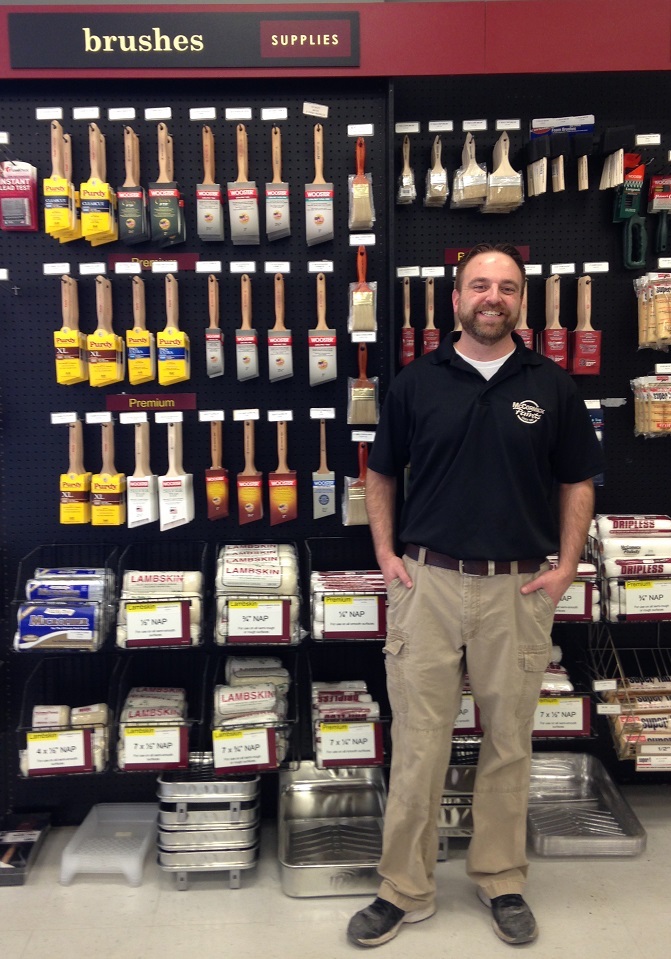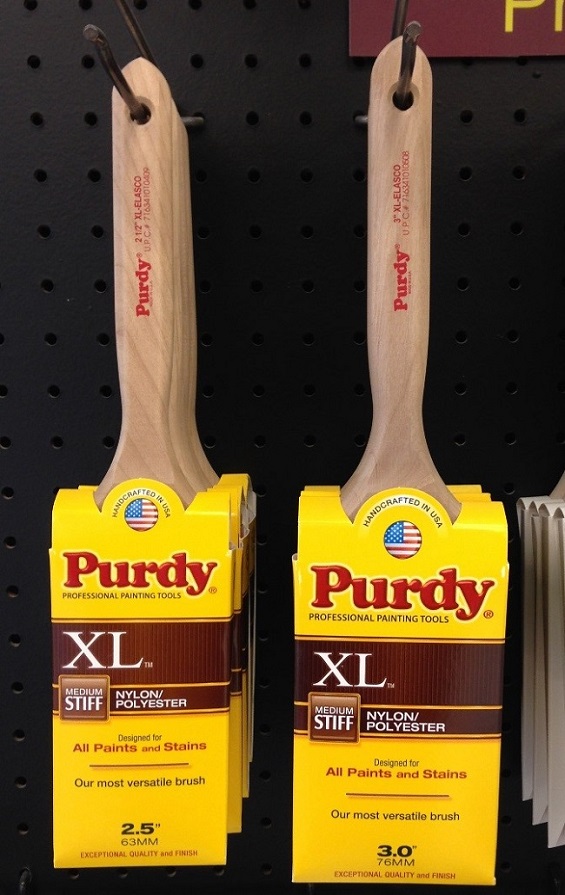When you’re faced with a wall full of paint brush options and terms like “flat”, “angled”, “Chinex” and “nylon/polyester,” it can be confusing to know which paint brush is right for your job. Different projects and paint products work best with certain types, sizes and qualities of paint brushes. We sat down with our McCormick Paints Rockville Store Manager, Todd, to find out what brush a real paint pro would recommend, depending on your particular paint project and need.

When choosing a paint brush for your painting project, answer these three questions to help lead you to the best brush for your job.
1. WHAT TYPE OF PAINT OR COATING ARE YOU USING?
-
Oil Based Paints –
If you are using an oil based paint for your project, such as McCormick Paints Cote-All, then look for a China bristle brush. This type of brush should be cleaned using paint thinner.
-
Oil Based Stains–
When working with oil based stains like McCormick Brand stains or certain Old Masters products, such as their Wiping Stain, use a China bristle paint brush.

-
Latex Based Paints –
When painting with a latex based paint, like McCormick Paints Generation, REVO or Advantage, use a nylon/polyester paint brush. These types of brushes should be cleaned using soap and water.
-
Water Based Stains/ Water Based Polyurethanes –
Use a nylon/polyester paint brush when working with water based stains or polyurethanes, like Old Masters products.

Tip from Todd: Some brushes might claim to be okay for use with all types of paint. If you choose to purchase one of these brushes, you should still only use it with one type of paint. Switching between different types of paint with the same brush could be compromise the performance of the brush.
2. WHAT AREAS ARE YOU PAINTING?
-
Doorways or Trim:
Use a smaller brush for these tighter areas. Look for a brush 1.5”-2” in width.

-
Cutting-In from Ceiling to Wall or from Wall to Trim:
You can use a larger brush for these areas, but make sure it’s a size that feels right for you and that you can easily control. A 2” -2.5” brush works well for these areas.



-
Larger Areas:
When you have a larger area to paint, but can’t access it with a roller, you should choose a larger, flat paint brush for these production areas as opposed to an angled brush that works well for cutting-in.


Tip from Todd: Choose a brush based on how it feels when you hold it. The larger brushes (3”) are best for more experienced painters as the larger the brush the more control that is required. Various handle lengths and handle diameters are available to suit your individual comfort preferences.
3. HOW LONG DO YOU INTEND TO KEEP THE PAINT BRUSH?
-
Long Term Use:
Invest in a high quality brush that will last a long time. A higher end paint brush will generally have more densely packed bristles, which means it will hold more paint and go further. When you invest in a high quality brush from our Premium brush section, be sure to properly clean and care for your brush so that it works well over time. Save the cardboard sleeve (called a “keeper”) to store your brush; this will protect the bristles and keep the brush nicely formed for your next use.


-
1-2 Uses:
If you don’t intend to re-use the paint brush once your job is over, then look for a brush in our Professional or Value brush section. These brushes, such as the McCormick Brand paint brushes, are affordable and will get the job done.

-
One Time Use:
Consider using a chip brush when applying Kwik paste paint remover, or a foam brush when applying a McCormick paint sample. These can be thrown away after they’re used.


Tip from Todd: A Chinex brush, such as the WOOSTER Chinex FTP, is a great option for oil or latex based paint projects. It’s more densely packed white bristles will hold more paint and it’s a longer lasting brush.

If you’re still not sure which brush you need, or have specific questions on paint brushes, contact your local McCormick Paints store for recommendations.
